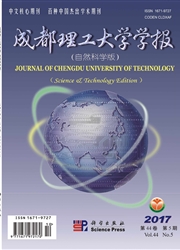

 中文摘要:
中文摘要:
"4·20"芦山地震诱发了大量次生地质灾害。针对此次地震引发的次生地质灾害,通过分析地形地貌、地质条件、地震活动和极端干湿气候对泥石流发育的影响,建立地质灾害易发性评价指标,利用GIS空间分析技术对四川震后地质灾害易发性进行了快速定量评价。结果显示,2013年四川省地质灾害高、中、低易发区面积分别为9.97×104 km2、6.67×104 km2、1.41×104 km2。其中高易发区主要集中于芦山地震影响区、汶川地震影响区、川东南和川南干旱区。在此基础上提出了防控建议。
 英文摘要:
英文摘要:
A large number of secondary geological disasters were induced by the "4·20" Lushan earthquake in Sichuan province.In order to assess the secondary geological hazards,this paper analyzes the effects of topography,geological conditions,earthquakes and drought on debris flow development,and then sets up the assessment indexes.A speedy quantitative assessment of hazards sensibility is carried out using GIS spatial analysis technology.The results indicate that the areas of the high probable,mid-probable,low probable geological disasters in Sichuan province in 2013 are 99 700 km2,66 700 km2,14 100 km2,respectively.The high probable geological disasters will be distributed over the affected areas by the Lushan earthquake and the Wenchuan earthquake,and the drought areas in the south and southeast of Sichuan province.Based on the above,the suggestions of prevention and control are put forward.
 同期刊论文项目
同期刊论文项目
 同项目期刊论文
同项目期刊论文
 期刊信息
期刊信息
